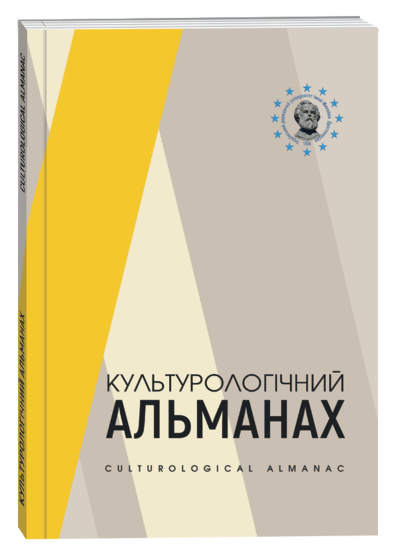REPRESENTATION OF THE CULTURAL TRAUMA OF THE HOLOCAUST IN THE UKRAINIAN CINEMA SPACE
DOI:
https://doi.org/10.31392/cult.alm.2022.3.34Keywords:
Holocaust, cultural trauma, visual language, commemoration, collective memory, cinemaAbstract
The intensification of interest in the Holocaust and its impact on the civilization process is primarily due to the attempt to understand the transformation and adaptation of collective memory to the challenges of today. The tragedy contains a whole range of complex symbolic mythologies, a number of axiological meanings. The very rethinking of the Holocaust is an attempt to create an open intercultural dialogue in order to level difficult historical moments. But the event and the practices of its representation are still perceived by society from the position of duality of approaches. On the one hand, the Holocaust exists within the local ethnohistory, appealing to the contextual facts of the evolution of anti-Semitism in the ideology of the Third Reich. On the other hand, it is a tragedy that, in terms of a traumatic event, creates a deep collective memory that needs to be visualized. For quite a long time, the socio-cultural space avoided the topic of the catastrophe of the Jewish people, ethically limiting the disclosure of facts and clearly regulating their presentation. The article raises the problem of the representation of the cultural trauma of the Holocaust in the Ukrainian cinema of the 20th and 21st centuries, and its social purpose. Characterized features of the use of visual language to depict the image of the narrative of the tragedy of the Jewish people. The research methodology is focused on the use of a systemic approach based on historical-cultural, comparative, typological and analytical methods. This makes it possible to characterize the transformation of ideas about the Holocaust and to rid the event of artificial lacunarity. A quantitative method was also applied: an attempt was made to analyze the content of a number of Ukrainian tapes about the Holocaust, which contain vivid means of audiovisual expressiveness in the depiction of Jewishness. It is proved that cinematography can be considered a form of commemoration, which creates an open semiotic-cultural space for the discourse of trauma, the problem of representation of collective memory in the postmodern age.
References
Довженко – центр: веб-сайт. URL: https://dovzhenkocentre.org/ (дата звернення:26.09.2022).
Меморіальний комплекс «Бабин Яр»: веб-сайт. URL: https://babynyar.org/ua/ (дата звернення:10.08.2022).
Cторінки єврейського мистецтва України / уклад. Н. Риндюк. Київ : Дух і літера, 2018. 256 с.
Alexander, J. C. (2004). Cultural Trauma and Collective Identity. California : Social Science. 304 p.
Bösch, F. 200 Film, NS-Vergangenheit und Geschichtswissenschaft.Von «Holocaust» zu «Der Untergang»: N. Y. 128 р.
Gershenson О. (2013). The Phantom Holocaust: Soviet Cinema and Jewish Catastrophe. Jewish Cultures of the World: Rutgers University Press. 290 p.
Gutwein D. (2009). The Privatization of the Holocaust: Memory, Historiography, and Politics. Israelis and the Holocaust: Scars Cry out for Healing. Vol. 14. № 1. P. 36–64.
Craps S. (2011). Introduction: Transcultural Negotiations of Holocaust Memory: WSU Journals. Vol. 53. № 4. P. 517–519.
Halbwachs M. (1967). La Mémoire collective. Paris:Les Presses universitaires de France. 204 p.
Sztompka P. (2000). Trauma wielkiej zmiany.Warszawa, 2000. 117 р.
Steinlauf M. (1997). Enslavement of the Dead: Poland and Holocaust Remembrance. Poland : Syracuse University Press, 1997. 208 р.








